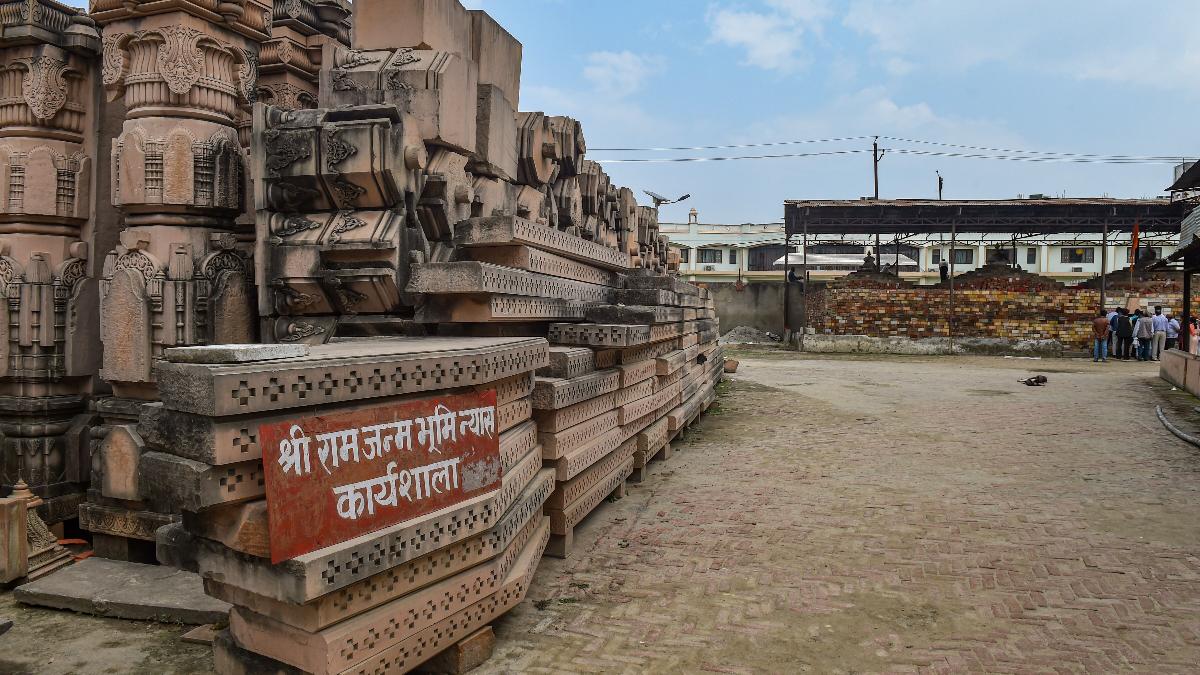Echoes Through Time: Ram Mandir, a Saga of Faith, Struggle, and Triumph

From the misty whispers of Treta Yuga to the gleaming marble rising in Ayodhya, the story of Ram Mandir is a poignant melody spanning centuries. It’s a tapestry woven with threads of history, faith, and an unwavering resilience that echoes through generations. This saga transcends mere bricks and mortar, becoming a poignant symbol of a nation’s search for identity, justice, and ultimately, harmony.
Treta Yuga’s Whispers and Mughal Shadows (1000-1528):
Legends whisper of a majestic Ram temple in Ayodhya, its foundations echoing with the footsteps of Ramayana’s heroes. However, in 1428, history took a tumultuous turn. Mughal emperor Babur captured Ayodhya, and with it, the whispers solidified into a painful reality – the alleged destruction of the temple and the construction of the Babri Masjid on its disputed ruins. The centuries that followed witnessed simmering tension, punctuated by occasional clashes over the site.
Seeds of Discord Sown: Legal Battles and Rising Tensions (1528-1947):
India’s independence in 1947 brought hope for a fresh start, but the Ayodhya dispute remained an open wound. Tensions escalated in 1962 when Muslim groups objected to Hindu worship ceremonies within the Babri Masjid complex. In 1984, the Vishva Hindu Parishad (VHP) launched the Ram Janmabhoomi Rath Yatra, a nationwide chariot procession that galvanized Hindu support for reclaiming the site. This ignited a political firestorm, pushing the dispute to the forefront of national discourse.
A Day that Shook India: Babri Masjid’s Fall and Fractured Dreams (1992):
December 6th, 1992, etched itself into history’s annals in stark red letters. A mob of Kar Sevaks, Hindu volunteers, stormed the Babri Masjid, tearing it down in a devastating display of religious fervor. The act triggered nationwide communal riots, plunging India into darkness. This pivotal event cast a long shadow, raising questions about religious tolerance and social harmony.
Justice Seeks Light: Legal Labyrinth and Archaeological Revelations (1992-2019):
The Babri Masjid’s demolition cast a long shadow. The Liberhan Commission was established to investigate the incident, while legal battles over the disputed land continued for years. In 1996, the Allahabad High Court delivered a divided verdict, ordering the land’s division between Hindus and Muslims. The Godhra train burning incident in 2002 and the subsequent Gujarat riots heightened the need for a swift and peaceful resolution.
A ray of hope emerged in 2010 when the Archaeological Survey of India (ASI) unearthed evidence of Hindu religious structures beneath the Babri Masjid. This finding bolstered the Hindu legal claim and paved the way for a historic Supreme Court verdict in 2019. The court upheld the Allahabad High Court’s land division decree, allocating two-thirds of the land for Ram Mandir construction and one-third for a mosque.
Bhoomi Pujan: A New Dawn, A Marble Dream Takes Shape (2020-2023):
August 5th, 2020, witnessed another momentous occasion – the Bhoomi Pujan ceremony marking the official commencement of Ram Mandir construction. With Prime Minister Modi laying the foundation stone, the nation witnessed a dream take shape. Today, as the first phase of construction nears completion, the doors of the majestic Ram Mandir are slated to open for darshan in 2023.
Beyond Bricks and Mortar: A Legacy of Faith, Healing, and Unity:
The Ram Mandir saga transcends construction projects. It’s a potent symbol of faith, resilience, and the power of collective belief. While the temple’s rise serves as a testament to the Hindu movement’s triumph, it also presents an opportunity for national reconciliation and dialogue. As the echoes of history reverberate through the marble arches of the new Ram Mandir, India takes a significant step towards healing the wounds of the past and embracing a future of tolerance and mutual respect.
The Ram Mandir’s story is more than just a historical narrative. It’s a living testament to the complexities of India’s social fabric, the resilience of its people, and the constant quest for justice and harmony. As the magnificent temple rises amidst the bustling streets of Ayodhya, it whispers a promise – a promise of a nation forging unity from diversity, a nation where faith becomes a bridge, not a barrier, and where echoes of the past guide us towards a brighter future.




